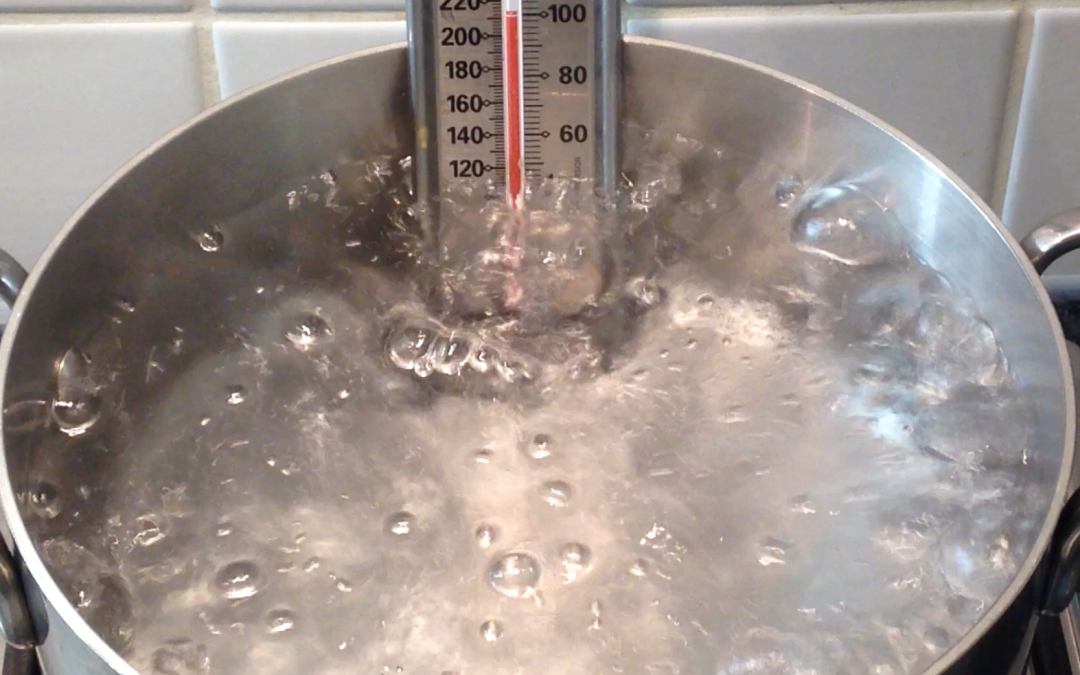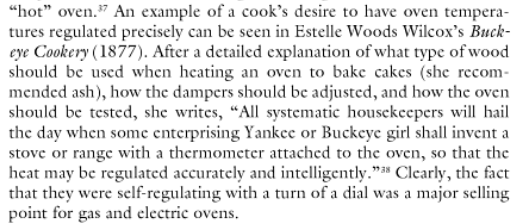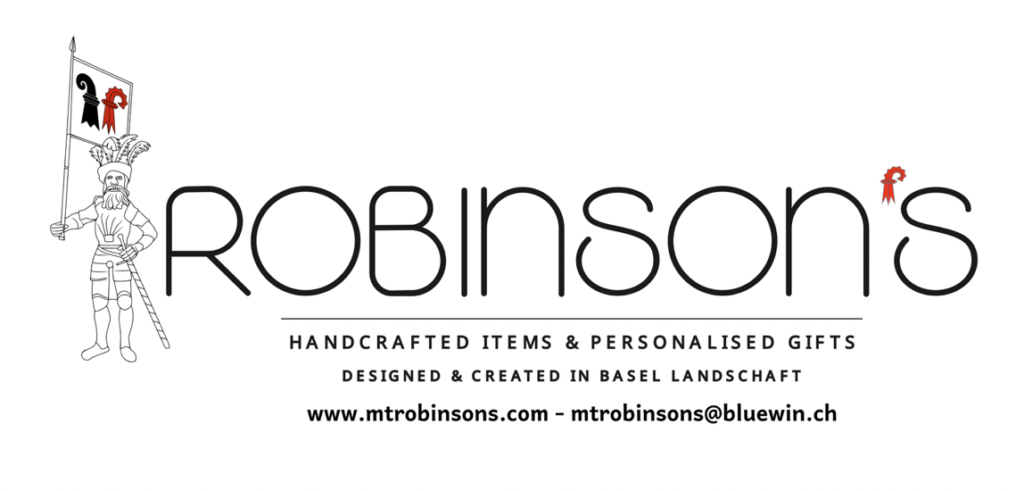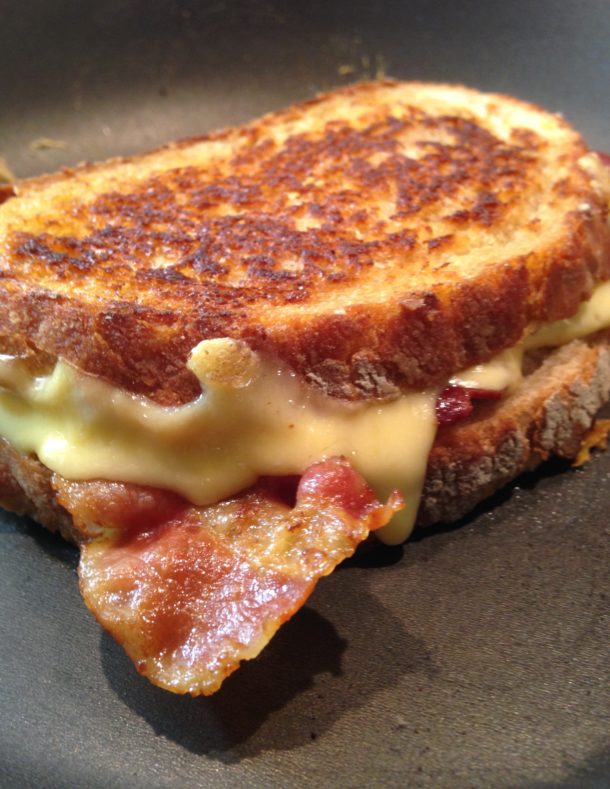Thank goodness for thermometers! They make cooking a lot easier. Thermometers, or something like them have been around for a zillion years, but a temperature scale that was refined enough for many uses and generally accepted didn’t come around until Mr. Fahrenheit created the eponymous scale used today. This was 1724. Mr. Celsius‘ scale didn’t come around for another 18 years and, for many reasons, he started with 0 being the boiling point and 100 being the freezing point. Could you imagine a recipe that told you to heat your water to 0 degrees until it boiled? The year Mr. Celsuis died this was switched. Through all of this, it still must have been difficult in the kitchen exchanging ideas about how to cook. The description of what was happening on the stove or in the oven, plus years of experience as a chef, would have been all important as there does not seem to have been many thermometers in use.
Even the great Le Guide Culinaire by none other than Auguste Escoffier didn’t mention temperatures. This book was first published in 1903. I have only a translation of this book and am under the impression that the temperatures in the translation were added for a modern context. Here is how the book describes how one can tell how hot oil for frying is – “The temperature of of fat can be judged as follows: When a sprig of parsley or crust of bread is placed in it and it immediately starts to sizzle, the fat is moderately hot; when a moist piece of food is placed in and it crackles the fat is hot and if it gives off a pronounced smell it is very hot”. Interesting! Chefs of the time needed a lot of experience to get the job done right. If the pros did not have a thermometer, you could imagine what was going on in homes. A home oven did not have temperature on the dial until well after 1903. According to The History of American Cooking (by Merril Smith – Publisher ABC-CLIO, LLC) thermostats made it into ovens around 1915. Others indicate that temperatures were not on dials until after World War II. Rather they had low, medium and high. I suppose that would have been better than nothing at all, but not very exact. Temperature control was something people were interested in having as indicated by this quote from The History of American Cooking…
When we consider poaching, simmering and boiling the description of what was happening to the water must have been how the technique was passed down through the cooking ages. In my translation of Le Guide Culinaire, as best as I can find, there is a description for poaching – “boiling without actually boiling” and, in reference to poaching chicken, cooking “gently with only a barely discernible movement of liquid taking place”. I cannot find a reference to a definition for simmering and, I assume, boiling was, perhaps, obvious.
A thermometer helps define these terms and makes it easy for everyone to be on the same page, speaking the same language. We can easily obtain an instant read thermometer so achieving the right temperatures is easy, too. Sure, it is fun to use descriptions, but having a thermometer, and a list of temperatures makes it much more exact and, frankly, a lot simpler.
![]()
Here is a video that walks through all the temperature ranges for poaching, simmering and boiling. It shows what happens to water at each level.
![]()
Here is what you need to know about poaching, simmering, and boiling.
| To Poach | To Simmer (Slow) | To Simmer (Full) | To Boil | |
|---|---|---|---|---|
| Temperatures | 140-180F | 181-195F | 195-212F | 212F |
| Description of Water | As Auguste Escoffier has indicated, “only barely discernible movement.” Bubbles may be seen at the bottom of the pan, but they are not breaking the surface. | Bubbles, small ones, are breaking the surface occasionally. There is nothing rapid about what is happening to the water. | Bigger bubbles are breaking the surface at a more even, continuous pace. | Full,rapid bubbling of the water. |
| Best used for… | Delicate cooking of fish and other meats. | Stocks, braises and stews. | Steaming and double boilers. Used to do some reductions. | Blanching vegetables, grains, rice and noodles. |
| Best Temperature In The Range | 175F – You don’t want any food safety issues and this will be gentle enough and still get the job done in a timely manner. | 185F – This is a time issue. As with poaching, it is hot enough to get the cooking done in a timely fashion and still gentle enough to care for the ingredients that are being cooked. | 195F – This is not that important. It is speedier then a slow simmer, but care should be taken as it may not be as gentle as needed. | 212F – If you want to boil water, you don’t have much choice except to go with 212F. Boiling at high altitude is another conversation. |
There you have it! Everything you needed to know about poaching, simmering and boiling! Just remember – get a thermometer! After a little practice, you will know exactly what is happening in your pots and pans.
Keep Eating! Keep Innovating!
Which foods do you poach, simmer or boil? Let us know in the comments or on Facebook.
The Culinary Exchange can also be found on Twitter, Instagram, Pinterest, Google+ and YouTube.
Come On! Follow Along!







Trackbacks/Pingbacks